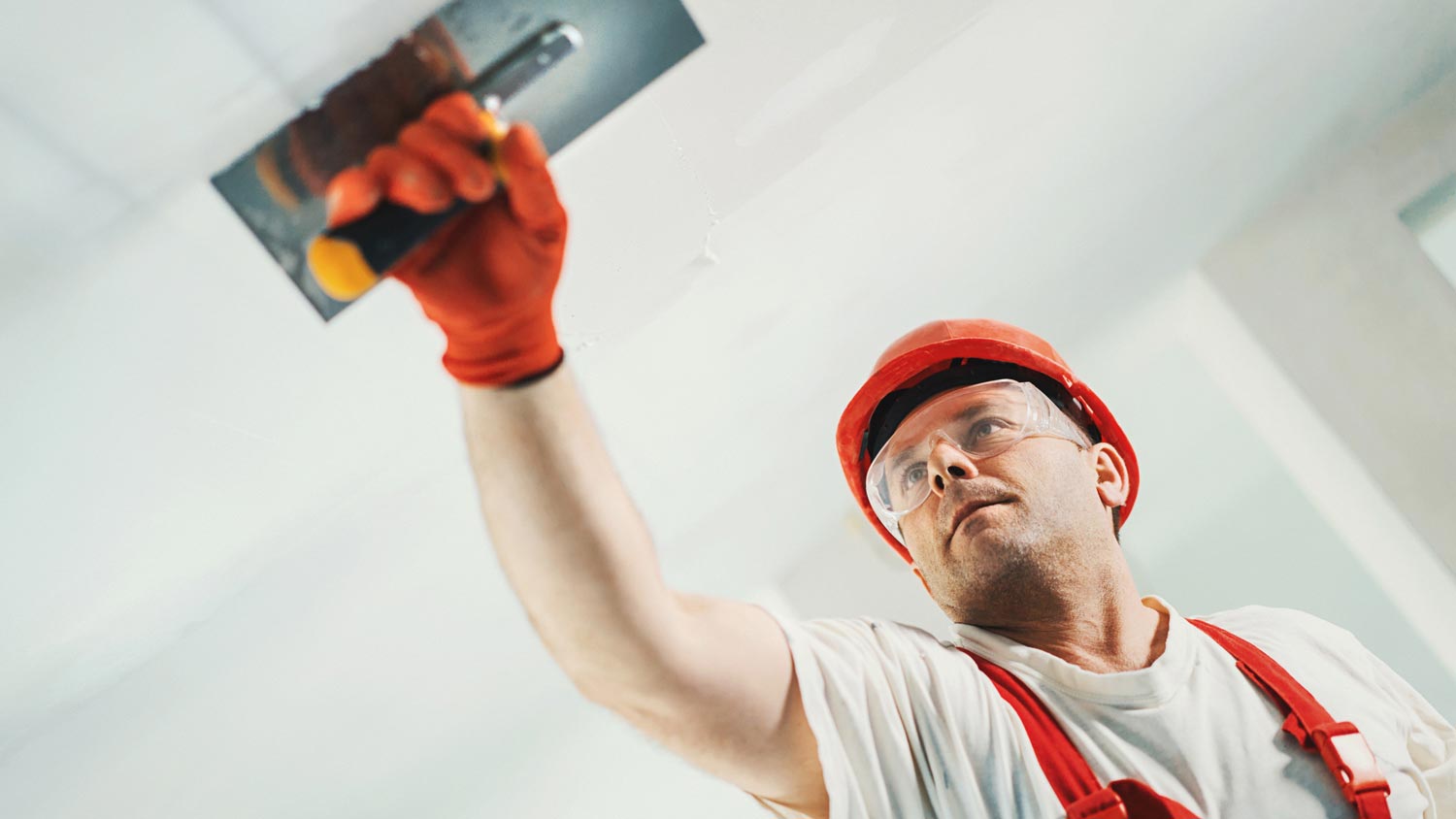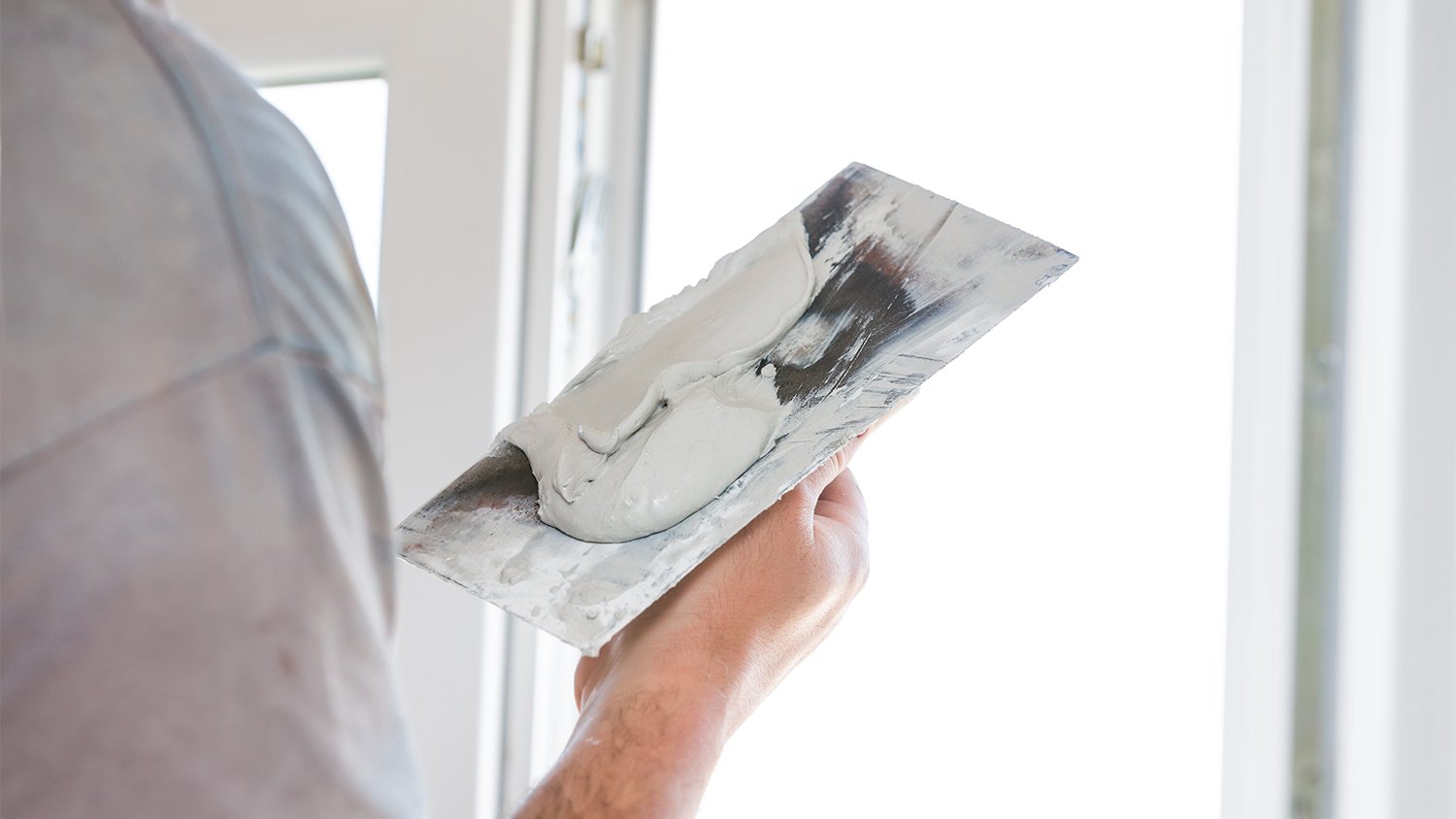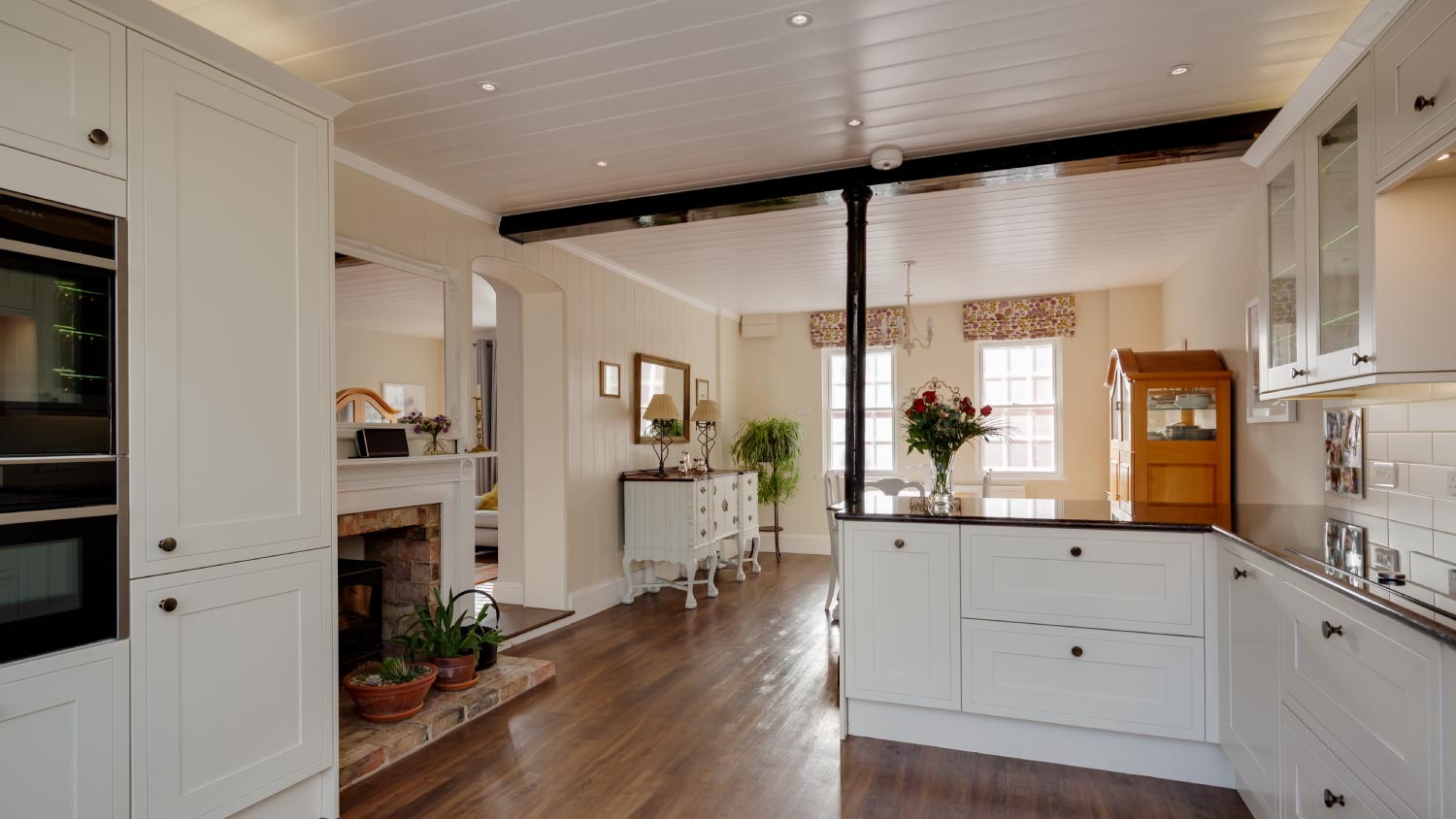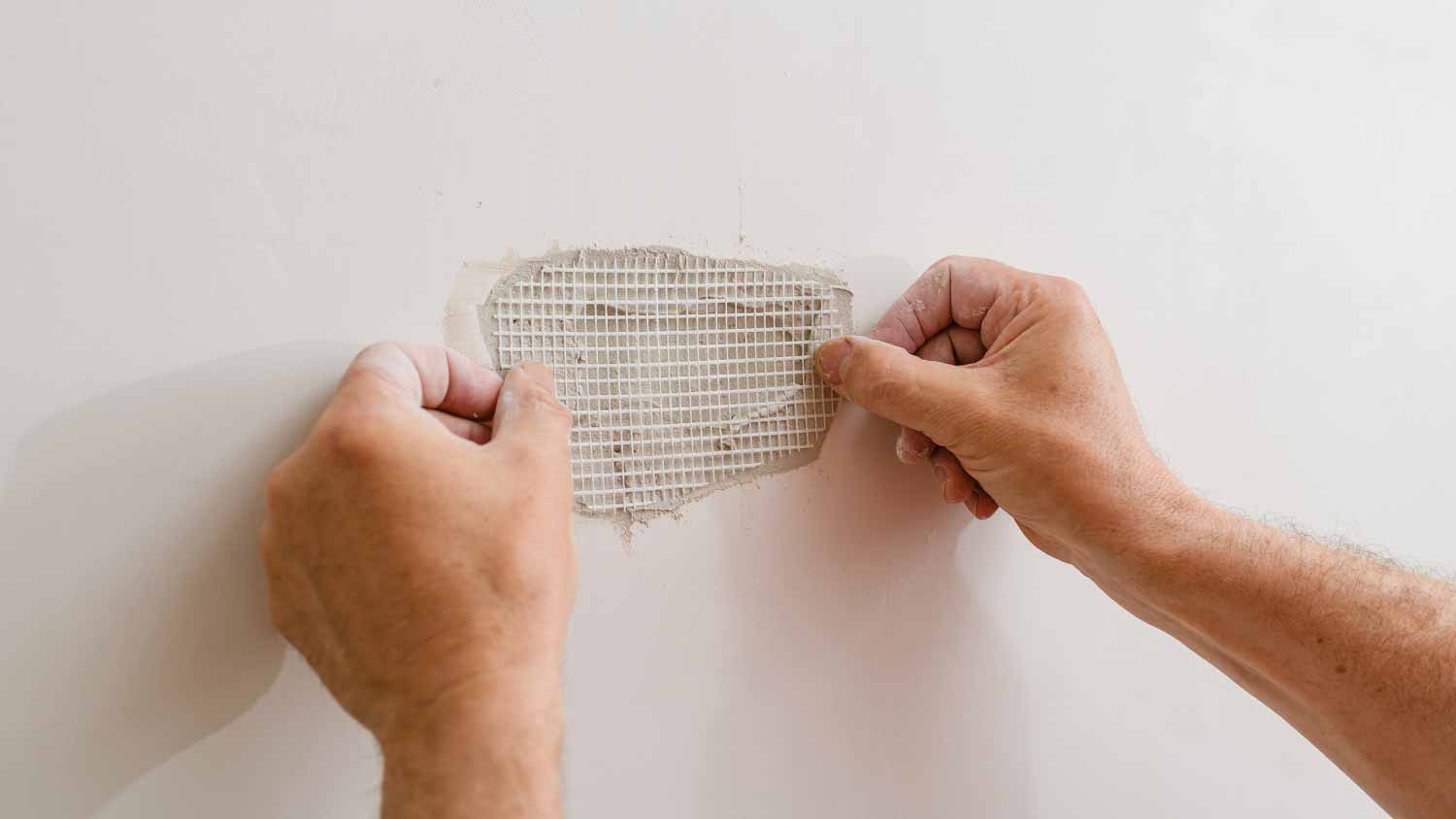How Much Does It Cost to Skim Coat Walls? [2025 Data]
While the cost of skim coating drywall is largely determined by the size of the room, most homeowners will spend about $600.


The cost of skim coating walls varies based on room size and wall quality, but the average cost sits around $600, and most projects fall between $300 and $1,200. Skim coating drywall—also known as a level-five drywall finish—gives your walls a nearly perfectly smooth finish. Whether you’re installing new drywall or refreshing older walls, a skim coat can make all the difference in the final appearance.
How Much Does It Cost to Skim Coat Walls per Square Foot?
It costs $1.10 to $1.30 per square foot to skim coat drywall. This cost doesn’t include the price of drywall or drywall installation. More complex spaces, such as a ceiling or intricate hallway, tend to be on the higher end of the cost range.
Skim Coating Cost Factors
The cost of skim coating is made up of materials, tools, and labor, and the majority of the cost goes toward labor. A contractor usually includes supplies in their estimate, but it’s best to double-check when obtaining a quote.
Room Size
In most cases, it makes sense to skim coat an entire room so that every wall has the same finish and appearance. Skim coating is generally more affordable than the cost of drywall repair or full replacement.
The size of your room has the biggest impact on the cost of skim coating. The table below includes standard room sizes and the average costs to skim coat walls based on the size, assuming you have standard 8-foot ceilings.
| Standard Room Size | Average Cost |
|---|---|
| 3-by-5-foot half bathroom | $100–$300 |
| 5-by-8-foot bathroom | $250–$400 |
| 6-by-10-foot bathroom | $300–$500 |
| 9-by-11-foot room | $400–$600 |
| 11-by-12-foot room | $450–$650 |
| 12-by-14-foot room | $500–$700 |
| 12-by-18-foot room | $600–$800 |
| 16-by-20-foot room | $700–$900 |
| 20-by-28-foot room | $1,000–$1,400 |
| 22-by-28-foot room | $1,200–$1,600 |
| Basement | $2,000–$8,000 |
| Entire Home (1,000 sq ft) | $4,000–$8,000 |
| Entire Home (1,500 sq ft) | $6,000–$10,000 |
| Entire Home (2,000 sq ft) | $8,000–$16,000 |
| Entire Home (2,500 sq ft) | $10,000–$20,000 |
| Entire Home (3,000 sq ft) | $12,000–$24,000 |
| Garage (1-Car) | $1,000–$1,500 |
| Garage (2-Car) | $1,500–$2,500 |
Materials
To skim coat walls, you’ll need drywall compound, which usually costs $15 to $20 for a four-and-a-half-gallon bucket. Plan for 0.05 pounds per 1 square foot of drywall. You’ll also need 120-grit sandpaper which costs $7 to $12 for a package of five sheets.
Labor
Hiring drywall finishers averages $50 to $100 per hour, though they usually charge by the foot based on their estimate of the project's length. It can take about four to five hours to complete a 500-square-foot project (the average size of a main bedroom), at the cost of approximately $200 to $500 for the labor alone. That accounts for nearly the entire cost of the project.
Since labor is the most likely factor to drive up your project costs, it’s important to understand that some factors can affect how long your project takes, which, in turn, drives up the labor cost to skim coat walls.
Drywall work is unlicensed and unregulated just about everywhere, so you need to see the quality of previous work before you invest any money and time in a drywall finishing contractor.
Number of Coats
Some walls will need multiple passes of skim coating, which can easily double or triple the time it takes to complete, along with the cost of labor. Some common cases where your walls might need multiple coats include the following:
If your walls are badly damaged
If you’re covering up previously textured walls
If your studs cause the drywall to come out of square
Be sure to ask your drywall professional how many coats they believe your walls will take, and make sure all of the necessary coats are included in your estimate.
Drywall Repairs
Before you can apply a skim coat, you’ll need to fix any dents, holes, or other damage to the wall. As with any project, the cost will depend on the extent of the damage. It can cost as little as $20 or up to $1,600 for a more extensive fix. Here are some common drywall repairs and their costs:
| Repair | Average Cost |
|---|---|
| Small holes | $20–$100 |
| Large holes | $50–$150 |
| Cracks | $50–$400 |
| Water damage | $600–$1,600 |
Paint or Wallpaper Removal
If your walls are currently painted or have wallpaper on them, they’ll need some prep work before your skim coating expert can get started. Of course, this means more working time and, consequently, higher labor costs.
If your walls are painted, your professional will likely only need to do some light sanding to make sure the surface can receive skim coating compound. Expect this to add $50 to $200 to your project total. Your initial estimate should include this, but it doesn’t hurt to double-check or ask before signing anything.
If you need your skim coater to remove wallpaper—a very time-intensive job—you could be looking at additional costs ranging from $400 to $1,200 or more per room. The total will depend on the type of wallpaper and how easy it is to remove.
Adding or Removing Texture
Textured drywall is a somewhat popular design option that adds a unique appearance to your room and can help hide imperfections in the wall.
If you want texture added to your wall, you can expect to pay around $750 per 500 square feet of drywall.
If you instead want to remove or cover up texture that already exists on your wall, you’ll likely need heavy sanding or multiple passes of skim coating, both of which will increase your costs. Expect to pay between $500 and $1,000 per 500 square feet to remove or skim coat over wall texture, depending on the type of drywall texture you want.
DIY vs. Hiring a Pro

Skim coating drywall yourself is a tough skill to master. The goal of skim coating is to ensure your wall has no texture, bumps, or obvious imperfections, which means you need to avoid mistakes at all costs. Otherwise, you’ll end up with a similarly unappealing wall. While you can do the project yourself, consider hiring the job out to a professional drywall finisher to achieve smooth walls.
Skim coating a room yourself costs you about $50 in materials and $430 in tools if you don’t have them already. Hiring a local drywall contractor is usually $50 to $100 per hour, and the average room takes four to six hours to complete—totaling a labor cost of about $200 to $600. As such, you could save quite a lot of money doing the work yourself.
Hiring a contractor generally results in a much better finish, though, saving you time and avoiding the need to buy specialty tools. Tackling small drywall repairs is a great DIY project, but large-scale drywall work is best left to a pro.
“If you are hiring a drywall contractor, ask about ‘dustless’ applications,” says Bob Tschudi, Expert Review Board Member and general contractor in Raleigh, NC. “These contractors are in high demand because they have special equipment that sands and–at the same time–collects the dust with a high-powered vacuum. They cost about 30% more, but we’ve found that the results are well worth the increased cost.”
How to Save Money on Skim Coating
While the cost to skim coat walls can quickly add up, there are a couple of ways you can save money on drywall skimming:
If you’re installing new drywall, reduce the number of gaps between your sheets. Measure the room and purchase the biggest drywall sheets possible for the space. The fewer the gaps, the less skim coating that’s needed.
Spend time to fix imperfections in your studs and ceiling joists before installing drywalling to reduce the need for skim coating after installation.
Avoid adding texture to your walls during the skim coating process, as this will drive up the cost.
Get multiple quotes
Only hire experienced professionals who have a proven track record and references. You’ll pay less for a low-quality pro, but the results will likely be disappointing, and you’re more likely to have to pay for the service again to fix errors.
Do as much of the prep work yourself as possible, like sanding down existing wall texture and removing wallpaper.
If you tackle the job yourself, borrow or rent tools instead of buying new ones.
Frequently Asked Questions
If you’re installing new drywall, you may need to skim coat the drywall first for a smooth finish and to allow the primer to adhere to the wall. It’s only necessary if there are imperfections in your drywall due to issues with the studs or improper drywall installation. If you’re refreshing existing walls, you may want to skim coat if there are imperfections across the wall. As an alternative, you can repair your drywall and sand it for a smooth finish before painting.
Skimming is covering drywall with a layer of drywall compound after installation or to smooth old walls. Plastering is covering walls with a mixture of gypsum or lime, cement or sand, and water. Plastering is more costly and labor-intensive than skim coating. Some homeowners and professionals refer to skim coating as plastering, even though the material spread over the wall is totally different.
There are five levels of drywall finishing based on the application:
Level 1: Includes hanging unfinished drywall.
Level 2: Drywall is installed, and seams are spackled. Screw holes usually aren’t spackled, and the drywall is unpainted. Usually for utility rooms.
Level 3: For garages, an additional step is usually taken to spackle over screw holes. Paint is sometimes an option.
Level 4: For most interior rooms. Two coats of spackle cover seams and screw holes. The surface is lightly sanded and painted.
Level 5: For high-end or luxury homes, the walls are spackled, sanded, and skim coated before painting.
















